Have you ever walked into a space and instantly felt warmth, energy, or even nostalgia? Colors have a way of shaping our emotions, and few cultures embrace color as wholeheartedly as Mexico. From the deep, sunbaked reds of colonial haciendas to the bright cobalt blue of Talavera pottery, Mexican interior design is a celebration of life, culture, and artistry.
But how do you bring this vibrant aesthetic into your own home? Whether you’re drawn to the earthy hues of terracotta and adobe or the playful pops of turquoise and hot pink, a traditional Mexican color palette can transform any space into a lively, welcoming retreat. Let’s dive into the rich world of Mexican colors and discover how to infuse your home with their warmth and character.
Embracing Hot Pink
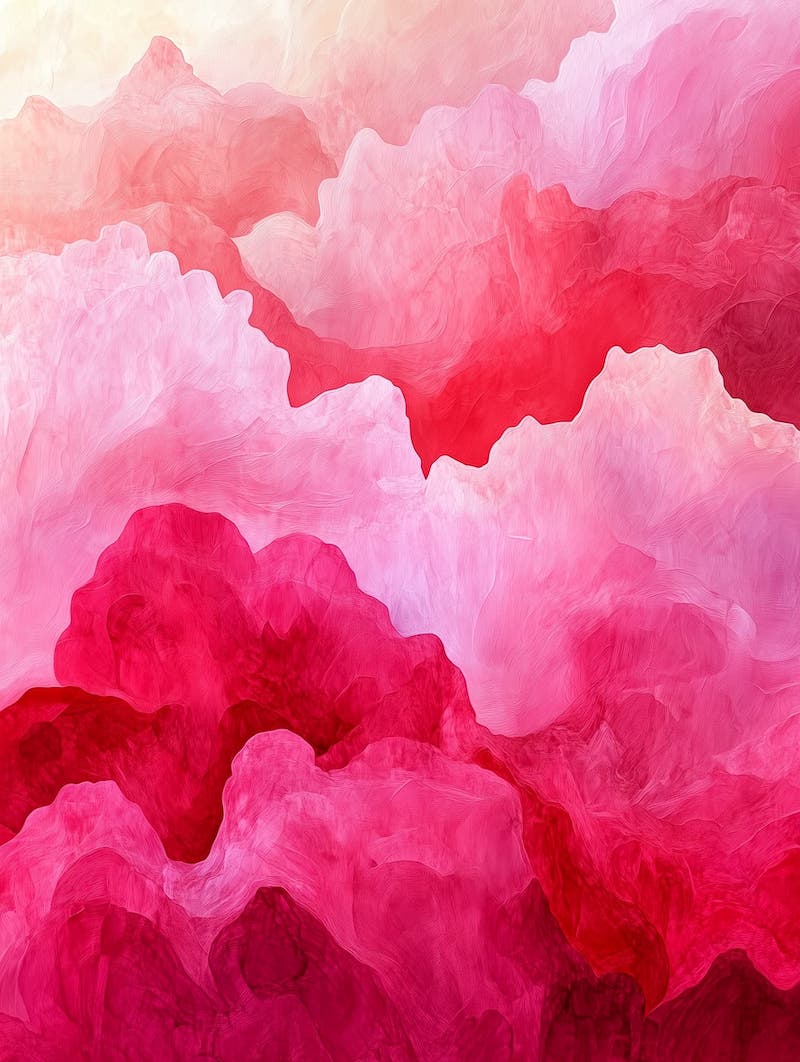
Hot pink, particularly the shade known as “Mexican pink” or “rosa mexicano,” is one of the most iconic colors in traditional Mexican design. This bold, electrifying shade has deep cultural roots and is widely used in textiles, architecture, and folk art.
The term “rosa mexicano” was popularized in the mid-20th century by Mexican artist and fashion designer Ramón Valdiosera, who championed it as a uniquely Mexican color inspired by the country’s indigenous textiles and crafts. The color is often associated with joy, festivity, and national identity, making it a defining element in Mexican visual culture.
Traditional huipiles, rebozos, and serapes frequently feature hot pink with other bright colors like turquoise, yellow, and orange. Hot pink is also a common color in sugar skulls, altar decorations, and marigold-filled ofrendas associated with the Day of the Dead.
How to Use Hot Pink in Interior Design
These bright pink tones encourage a playful vibe, perfect for festive and inviting communal areas. If you’re looking to incorporate hot pink into your home or design projects, consider one of these ideas:
- Accent Walls & Murals – Make a bold statement with a hot pink accent wall or a mural featuring Mexican folk art patterns.
- Wall Art – Add vibrancy with Frida Kahlo-inspired prints, traditional Mexican papel picado designs, or abstract pink paintings.
- Textiles & Upholstery – Incorporate hot pink through embroidered Otomi-style pillows, woven rugs, or a velvet accent chair when decorating your living room.
- Decor for Kids’ & Teen Rooms – Hot pink is playful and lively—perfect for a boho-style teen bedroom or an eclectic nursery.
- Kitchen & Dining Accessories – Use pink ceramic dinnerware, pink floral Talavera tiles, or table runners with bright pink embroidery.
- Plants & Floral Decor – Display vivid pink bougainvillea in rustic terracotta pots or decorate with artificial magenta florals.
Integrating Tropical Green
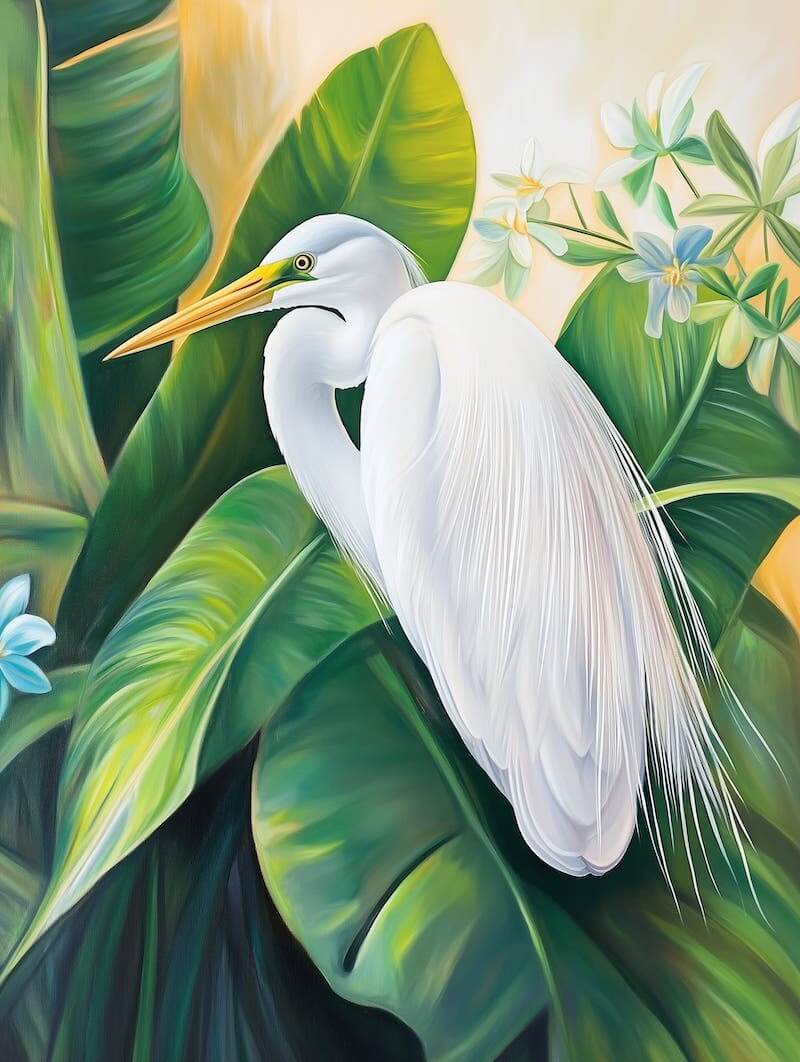
Green is a vital color in traditional Mexican design, symbolizing nature, life, and cultural heritage. Whether it’s the deep cactus green of the desert, the vibrant lime of fresh limes and avocados, or the jade tones of ancient Aztec artifacts, green plays a versatile and grounding role in Mexican aesthetics. Its hue provides a natural contrast to the warm reds, yellows, and pinks often seen in Mexican decor while adding balance and vibrancy to any space.
From lush jungles in Chiapas to agave fields in Jalisco, shades of green are deeply connected to Mexico’s diverse geography. Many iconic Mexican foods are green: tomatillos, nopales (cactus paddles), avocados, cilantro, and chiles all play a major role in Mexican cuisine. Indigenous Huichol art uses bright greens, blues, reds, and yellows to create intricate designs. In addition, many traditional kitchens feature green-painted cabinets or shelving, often paired with warm terracotta tiles.
Green is one of the easiest colors to incorporate into any design—decorating with houseplants is always in style!
How to Use Green in Interior Design
Green’s natural, earthy feel makes it a versatile choice for both interior and exterior spaces. Here are some ways to incorporate it:
- Wall Paint & Tile Accents – Sage green creates a soothing backdrop for painting your living room, while avocado or jade green tiles add a pop of color in kitchens or bathrooms.
- Furniture & Cabinetry – Consider a deep green velvet sofa, lime green accent chairs, or cactus-colored kitchen cabinets for a Southwestern color aesthetic.
- Indoor Plants & Botanical Art – Cactus arrangements, potted succulents, and hanging pothos add natural green elements to any space. Don’t have a green thumb? Try wall art depicting tropical flowers, jungles, or cacti.
- Woven & Ceramic Accents – Display green-glazed pottery, woven avocado-green baskets, or lime-toned glassware in a dining room.
- Dining & Tableware – Use green glass tumblers, ceramic plates with leafy patterns, or a sage-colored woven table runner for a fresh look.
- Bedroom & Bathroom Styling – Sage green bedding, jade-colored towels, or tropical-inspired wallpaper bring a calm yet lively energy when decorating a bedroom.
- Outdoor Decor – Consider green-painted benches, wrought iron railings, or tiled fountains for hacienda-style patio decor.
Utilizing Terracotta Tones
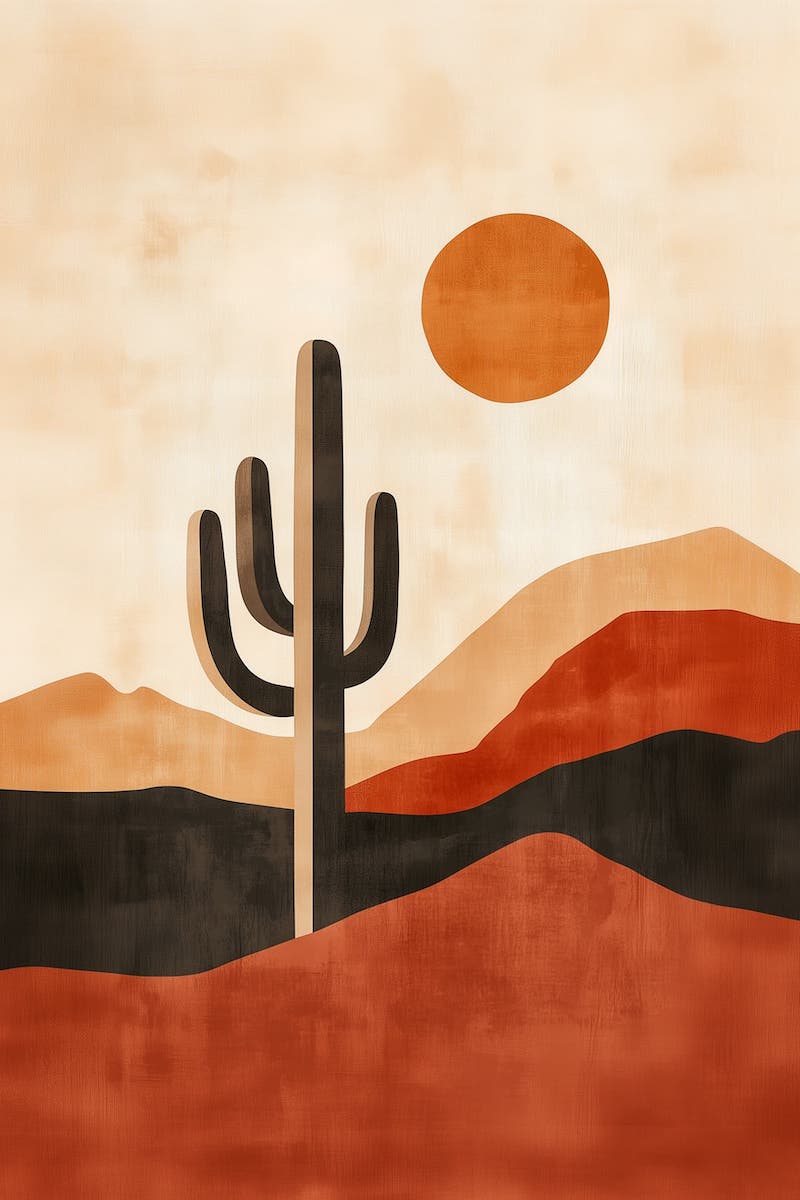
Terracotta is a foundational color in traditional Mexican design and can be used as a near-neutral base color for many color schemes. Its warm, earthy tones are deeply tied to Mexico’s natural landscapes and architectural heritage. This rich burnt orange-brown hue evokes the warmth of sunbaked clay, adobe homes, and handcrafted pottery. It serves as a grounding element in vibrant Mexican color palettes, providing a rustic and inviting balance to more vivid shades like turquoise, Mexican pink, and golden yellow.
The word “terracotta” comes from Italian, meaning “baked earth,” but in Mexico, this color has been integral to daily life for centuries. Pre-Columbian civilizations, such as the Aztecs, Mayans, and Zapotecs, used clay and earthen materials to create everything from homes and temples to functional pottery and ceremonial sculptures. During the Spanish colonial period, terracotta tiles and adobe bricks became defining features of Mexican architecture.
Saltillo tiles, a hallmark of Mexican flooring and outdoor spaces, are crafted from natural clay and develop a deep terracotta color that enhances with age. Traditional rugs, woven blankets, and Otomi embroidery often incorporate terracotta shades, harmonizing with more saturated colors like cobalt blue and mustard yellow.
How to Use Terracotta in Interior Design
Terracotta’s warmth and timeless appeal make it an excellent choice for adding depth and character to any space. Here are some ways to incorporate it:
- Warm, Earthy Walls – Use terracotta paint for an inviting, sun-kissed backdrop, or opt for an exposed brick or textured plaster finish.
- Wall Art – Want to use terracotta as an accent color, rather than the base of your color scheme? Try desert landscape art.
- Flooring & Tiles – Incorporate traditional Mexican Saltillo tiles or terracotta-colored ceramic tiles for an authentic rustic look.
- Rustic & Handcrafted Pottery – Decorate with terracotta vases, clay candle holders, or hand-sculpted figurines to add warmth and texture.
- Statement Furniture – Choose terracotta-hued leather sofas, burnt orange armchairs, or distressed wood tables with earthy accents. Warm-toned wooden furniture with terracotta cushions can add warmth to a space.
- Woven & Textured Textiles – Layer the space with terracotta linen curtains, wool throw blankets, or jute rugs with burnt sienna tones.
- Dining & Kitchen Accents – Use earthenware dishes, Mexican-style clay cookware, or earthy-hued woven placemats for a cozy dining atmosphere.
- Outdoor & Patio Styling – Add terracotta plant pots with colorful flowers, sunburst wall decor, or clay lanterns to create a warm, inviting outdoor retreat.
Glowing It Up with Golden Yellow

Golden yellow plays a crucial role in traditional Mexican design. From the golden hues of sun-drenched adobe walls to the vivid marigolds of Día de los Muertos, yellow embodies warmth, light, and a deep connection to nature and culture. Whether it’s a rich mustard, a glowing goldenrod, or a soft sunlit yellow, these hues bring energy and warmth to Mexican aesthetics.
From Otomi embroidery to woven rugs and papel picado, yellow is a frequent color used to balance Mexico’s vibrant palettes. Bright yellow tones can be found in woven baskets, market textiles, and pottery, adding an unmistakable energy to artisanal goods.
How to Use Yellow in Interior Design
Yellow is a warm, welcoming color that can liven up any space. Here’s how to incorporate its hues into Mexican-inspired decor:
- Warm Walls & Ceilings – Ochre walls or ceiling beams inspired by colonial Mexican haciendas create a sunlit ambiance.
- Textured & Patterned Textiles – Layer spaces with yellow serape blankets, embroidered cushions, or woven living room rugs with yellow, red, and blue motifs.
- Ceramic & Decorative Pieces – Decorate with Talavera pottery, glazed golden vases, or yellow candles in rustic holders.
- Dining Room Accents – Incorporate yellow table linens, sunflower-themed dishware, or Mexican glassware with amber hues to beautify your dining room.
- Statement Furniture – A golden yellow velvet sofa, vintage wooden chairs with yellow cushions, or a mustard leather ottoman add warmth and personality.
- Outdoor & Patio Decor – Brighten up patios with golden-hued woven hammocks, mosaic-tiled bistro sets, or Mexican sun wall art.
Highlighting Turquoise Tint
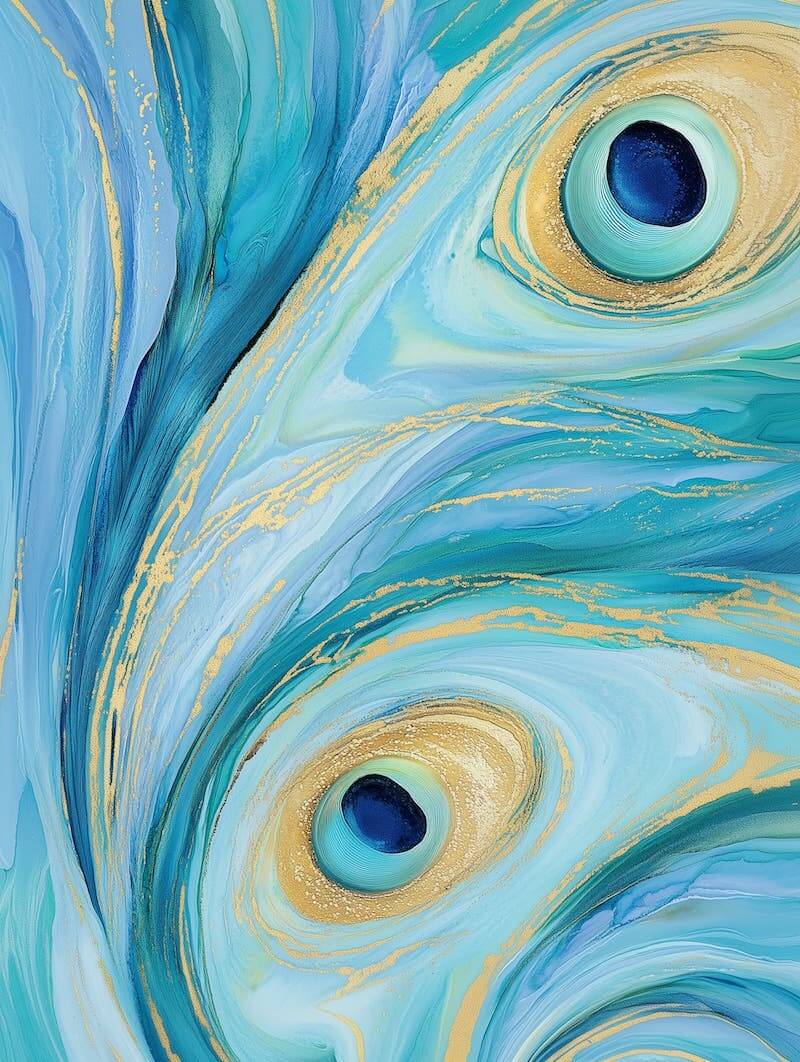
Although often associated with serene coastal vibes, turquoise offers a vibrant and invigorating touch to Mexican-inspired interiors. This striking blue-green hue evokes the natural beauty of Mexico’s landscapes, from the crystal-clear waters of the cenotes to the mineral-rich deposits found in ancient Mesoamerican artifacts.
Turquoise has been a revered color in Mexican culture for centuries, dating back to the Aztec and Mayan civilizations. These ancient peoples considered turquoise a sacred stone, symbolizing protection, spirituality, and power. It was used in jewelry, ceremonial masks, and mosaic artifacts, often paired with gold and obsidian to create intricate designs.
Authentic Talavera tiles, plates, and vases often incorporate teal and deep turquoise, contrasting beautifully with cobalt blue, yellow, and white. Many colonial-era homes and haciendas feature turquoise doors, window frames, and accent walls, giving them a refreshing, lively feel.
How to Use Turquoise in Interior Design
Turquoise can bring a fresh and dynamic feel to interiors and design projects. Some ways to incorporate it include:
- Walls & Backsplashes – For a vibrant, sun-washed look, use turquoise paint on an accent wall or incorporate turquoise tile backsplashes to embellish a kitchen.
- Painted Trim – Painting your front door or window trim in turquoise creates a striking visual effect.
- Statement Furniture – A distressed turquoise console table, an upholstered headboard, or a painted wooden cabinet adds rustic charm.
- Wall Art – Tropical ocean scenes, watercolors, and abstract art are all great ways to bring a pop of turquoise to your walls.
- Glass & Ceramic Accessories – Hand-blown turquoise glass vases, ceramic bowls, or decorative plates make beautiful tabletop accents.
- Bathroom & Bedroom Details – Add color to your bathroom with turquoise towels, bedding, or shower curtains for a refreshing, airy vibe. Adding black fixtures brings to mind the matrix veining seen in turquoise stones.
- Outdoor Spaces – Decorate patios with turquoise Adirondack chairs, Mexican tile-topped tables, or mosaic planters.
Capturing Ocean Blue
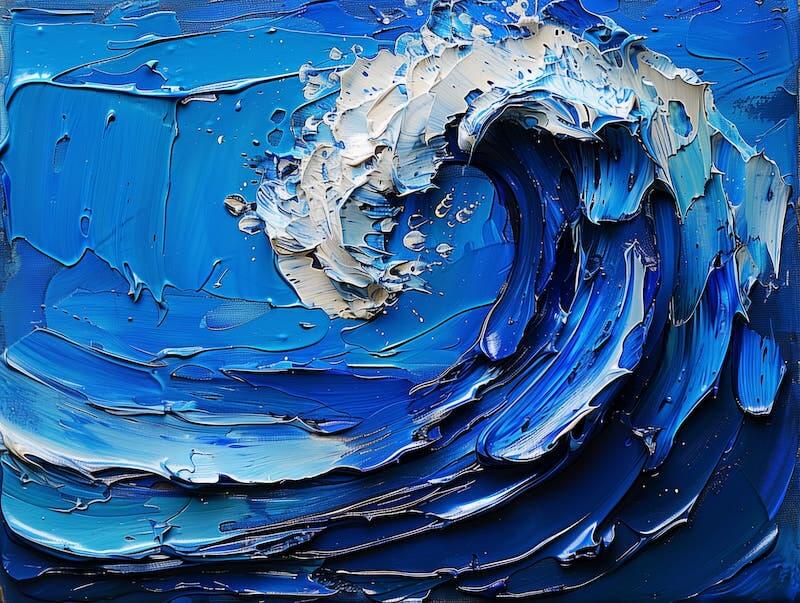
Deep cobalt and ocean-inspired shades of blue are some of the most striking and essential colors in traditional Mexican design. From pairing blue with white in Talavera pottery to Frida Kahlo’s Casa Azul, this rich hue is embedded into Mexican culture, art, and architecture. Whether evoking the Pacific waters, the sky over Oaxaca, or the intricate patterns of handmade textiles, blue brings a sense of depth, tradition, and tranquility to Mexican aesthetics.
In the Aztec and Mayan cultures, blue was a sacred color often associated with rain, water, and the gods. It was used in ceremonial murals, sculptures, and textiles. Many Mexican churches and haciendas incorporate blue in their domes, tiles, and decorative frescoes, representing protection and divinity. Quite frequently, alebrijes (painted wooden animals) and Day of the Dead decorations feature vibrant blue tones.
In traditional Mexican courtyards, blue-painted tiles and fountains create a refreshing, serene atmosphere, and colonial-style homes and haciendas in San Miguel de Allende and Mérida use blue-painted doors and shutters for contrast against warm terracotta walls.
How to Use Ocean & Cobalt Blue in Interior Design
Blue can create a bold focal point or a subtle accent in any space. Here’s how to incorporate it:
- Tile Work & Backsplashes – Cobalt blue is the most traditional Talavera color. Incorporate this beautiful tile style in kitchens, bathrooms, or stair risers for an authentic Mexican touch.
- Walls & Facades – A cobalt blue feature wall or Casa Azul-inspired exterior creates a stunning visual statement.
- Statement Seating & Furniture – Use deep blue velvet chairs, an indigo-painted wooden dresser, or a navy leather bench.
- Wall Art & Textiles – Hang cobalt blue folk art prints, blue abstracts, or indigo-dyed tapestries in a blue-and-white living room.
- Tableware & Glassware – Opt for cobalt blue Mexican glass goblets, deep blue ceramic dinner plates, or patterned serving platters.
- Curtains & Bedding – Introduce breezy ocean-blue linen drapes, navy cotton duvets, or royal blue embroidered throw pillows.
- Bathroom & Outdoor Decor – Enhance spaces with deep blue mosaic mirrors and ceramic garden stools, fountains, or planters.
Traditional Mexican Color Combinations & Creative Alternatives
Mexican design is known for its vibrant, bold, and energetic color combinations, often mixing warm and cool tones for a striking visual balance. While traditional palettes embrace the earthy tones of terracotta and mustard yellow alongside lively pinks, blues, and greens, you can also create fresh takes on Mexican aesthetics by exploring variations of hue, shade, and saturation. Consider how your space might look in the following interior design palettes, and don’t forget to take the 60-30-10 rule into account for balancing the colors.
Terracotta + Cactus Green + Golden Yellow

Inspired by: Mexican deserts, hacienda- and pueblo-style decor, and traditional clay pottery.
Best for: Rustic interiors, outdoor patios, and natural decor.
How to use it:
- Walls in warm terracotta
- Furniture or textiles in cactus green
- Accents (tiles, planters, or pillows) in golden yellow
Mexican Pink + Turquoise + Deep Red

Inspired by: Otomi embroidery, folk art, and fiesta decorations.
Best for: Playful, festive spaces with an eclectic, bohemian vibe.
How to use it:
- Furniture pieces in Mexican pink
- Choose wall art, textiles and tilework in turquoise
- Small decor (ceramics, cushions) in deep red
Ocean Blue + Mustard Yellow + Bright White

Inspired by: Talavera pottery and colonial Mexican architecture.
Best for: Mediterranean-style homes, Mexican-style kitchens, and sunlit courtyards.
How to use it:
- Blue and white Talavera tiles for backsplashes or flooring
- Walls in warm mustard yellow
- Furniture and textiles with blue-and-white motifs
Cobalt Blue + Terracotta + Olive Green

Inspired by: Casa Azul, traditional Mexican markets, and earthen landscapes.
Best for: Southwestern-style decor, modern hacienda aesthetics.
How to use it:
- Accent walls in deep cobalt blue
- Flooring or furniture in terracotta
- Textiles and decor in olive green
Marigold Yellow + Deep Burgundy + Burnt Orange

Inspired by: Día de los Muertos and traditional Mexican celebrations.
Best for: Cozy interiors, cultural spaces, or statement decor.
How to use it:
- Walls or major decor in marigold yellow
- Accent furniture in deep burgundy
- Textiles (blankets, pillows, rugs) in burnt orange
Blush Pink + Sage Green + Cream

A softer take on Mexican color palettes, inspired by handwoven textiles and vintage hacienda interiors. The muted colors and calming green make this a great option for decorating an office with more personality than all-neutrals.
Best for: Neutral and minimalist spaces with a hint of warmth.
How to use it:
- Walls in soft blush pink
- Furniture or cabinets in sage green
- Cream accents (rugs, ceramics, decor)
Turquoise + Coral + Sand Beige

A tropical take on Mexican design, inspired by coastal towns and beachside villas. Hanging oversized artwork of a beachy scene or a tropical landscape with a wide-open sky is the icing on the cake.
Best for: Breezy and coastal-inspired spaces.
How to use it:
- Walls or tiles in turquoise
- Decor and accents in coral
- Floors or neutral furniture in sand beige
Olive Green + Rust Orange + Soft Gold

A muted, modern version of traditional Mexican palettes.
Best for: Earthy, desert modern, and organic interiors.
How to use it:
- Rust orange walls or textiles
- Olive-green furniture or plants
- Soft gold accents in lighting or metal details
Cobalt Blue + Charcoal Grey + Warm Wood Tones

A sophisticated Mexican-inspired palette with a modern twist.
Best for: Sleek, contemporary interiors with a touch of warmth.
How to use it:
- Cobalt blue furniture or a statement wall with grey
- Charcoal grey textiles or countertops
- Natural wood tones in flooring or decor
What’s Your Favorite Mexican Color Combination?
Whether you embrace the bold vibrancy of traditional Mexican palettes or adapt them into softer, modern interpretations, these combinations can bring warmth, personality, and culture to any Latin American-style space. The key to achieving a Mexican-inspired aesthetic is balance—pairing earthy, grounding tones with bright, celebratory hues to create a visually rich and inviting environment.




